Salamandrina perspicillata
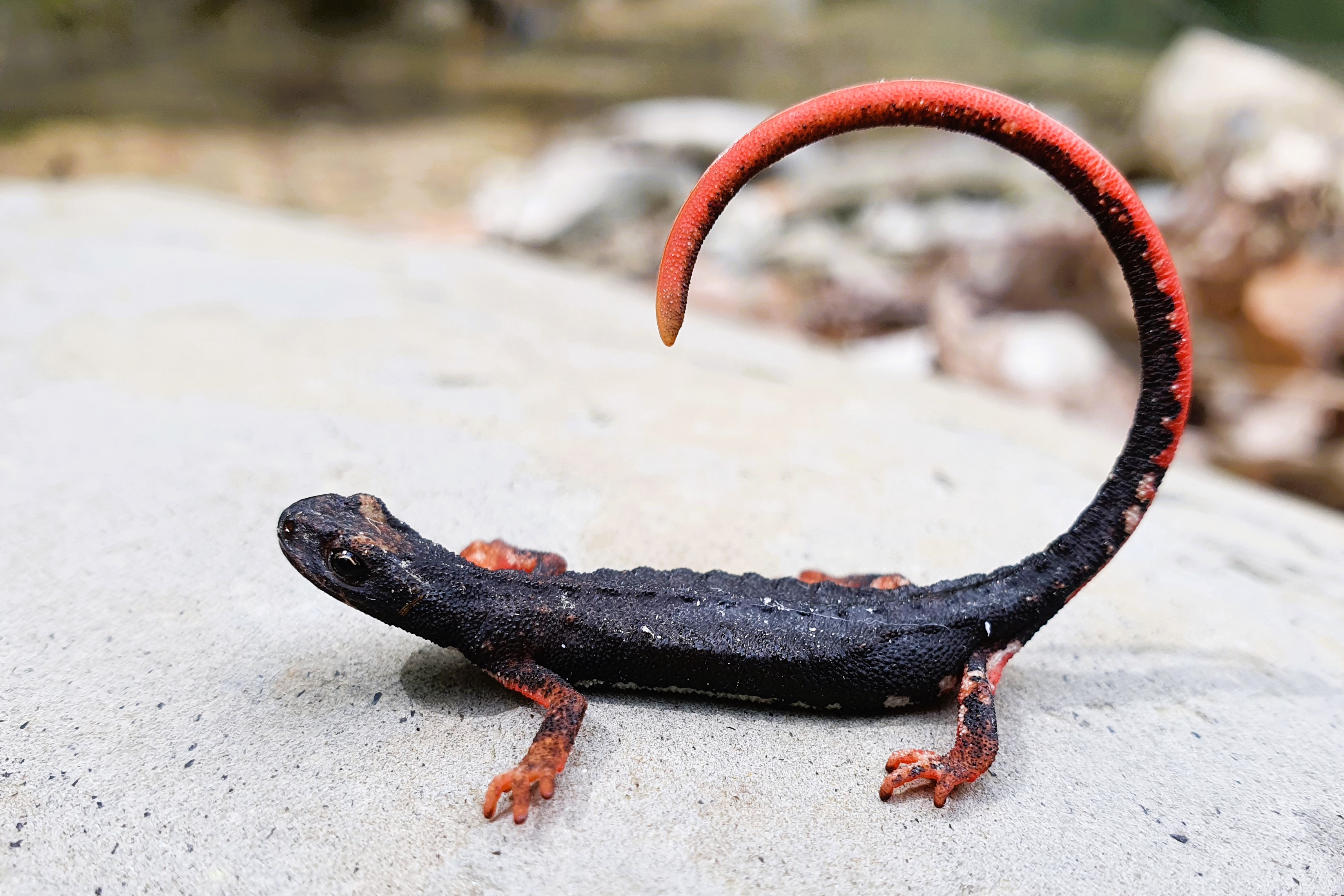

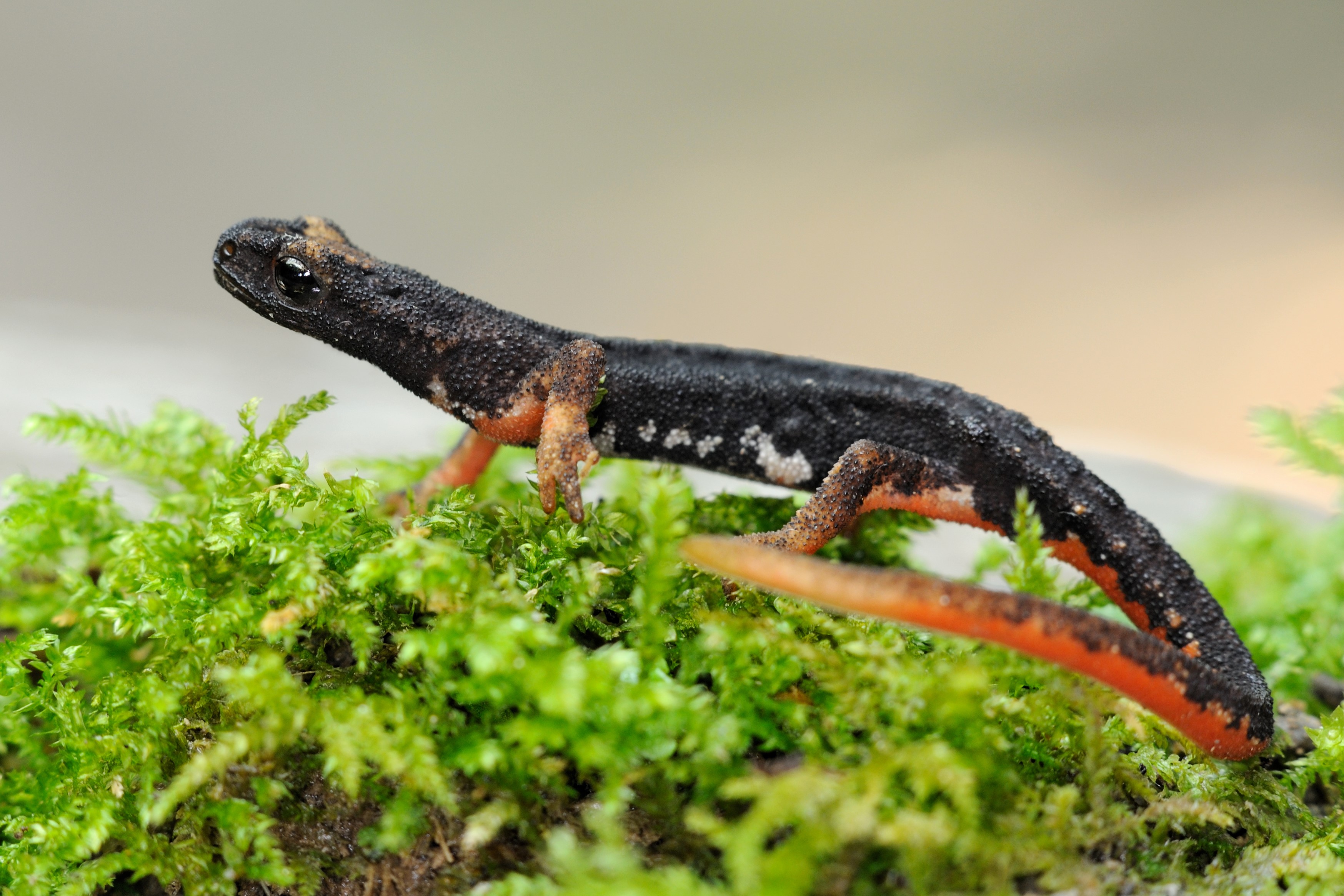
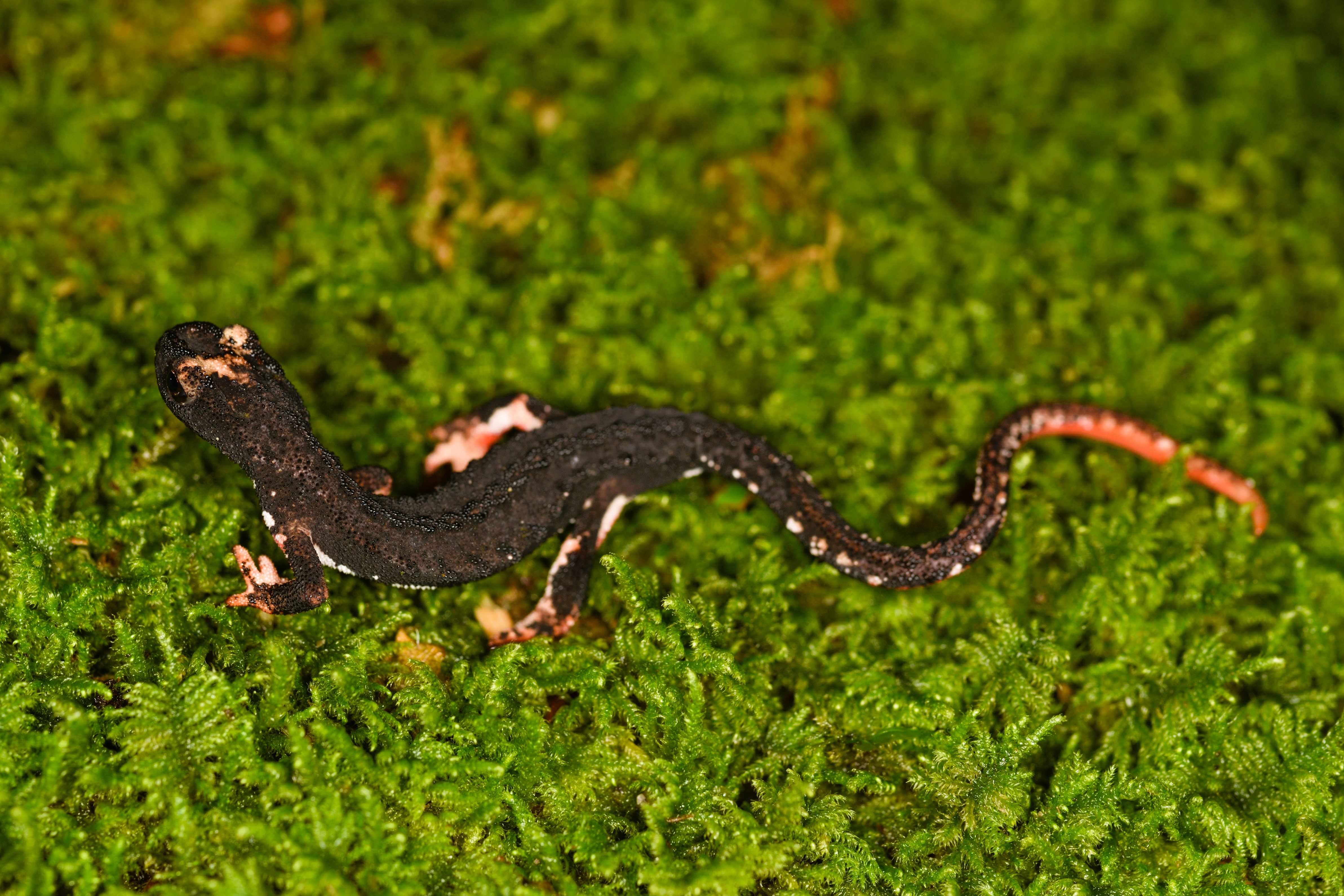
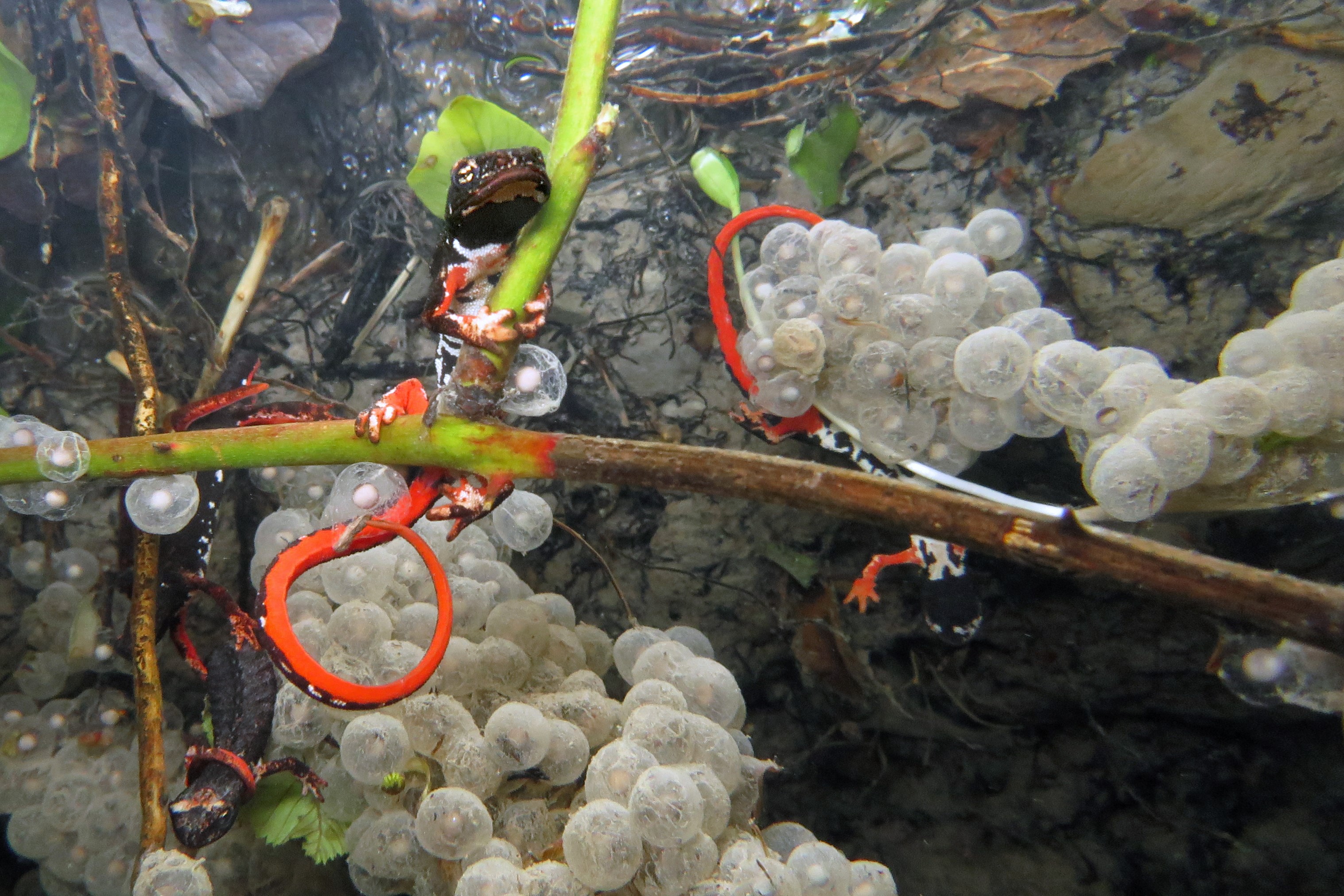
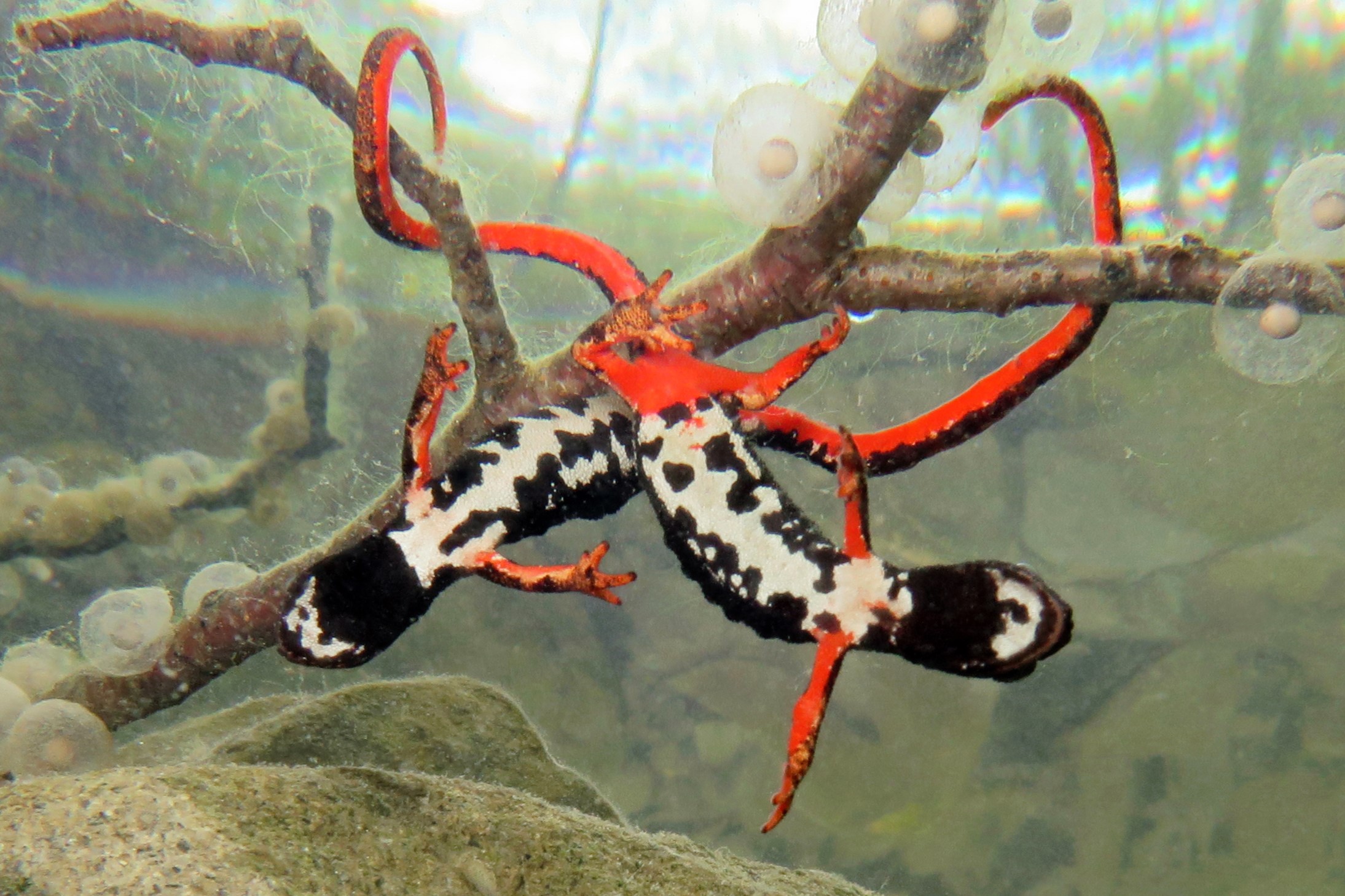
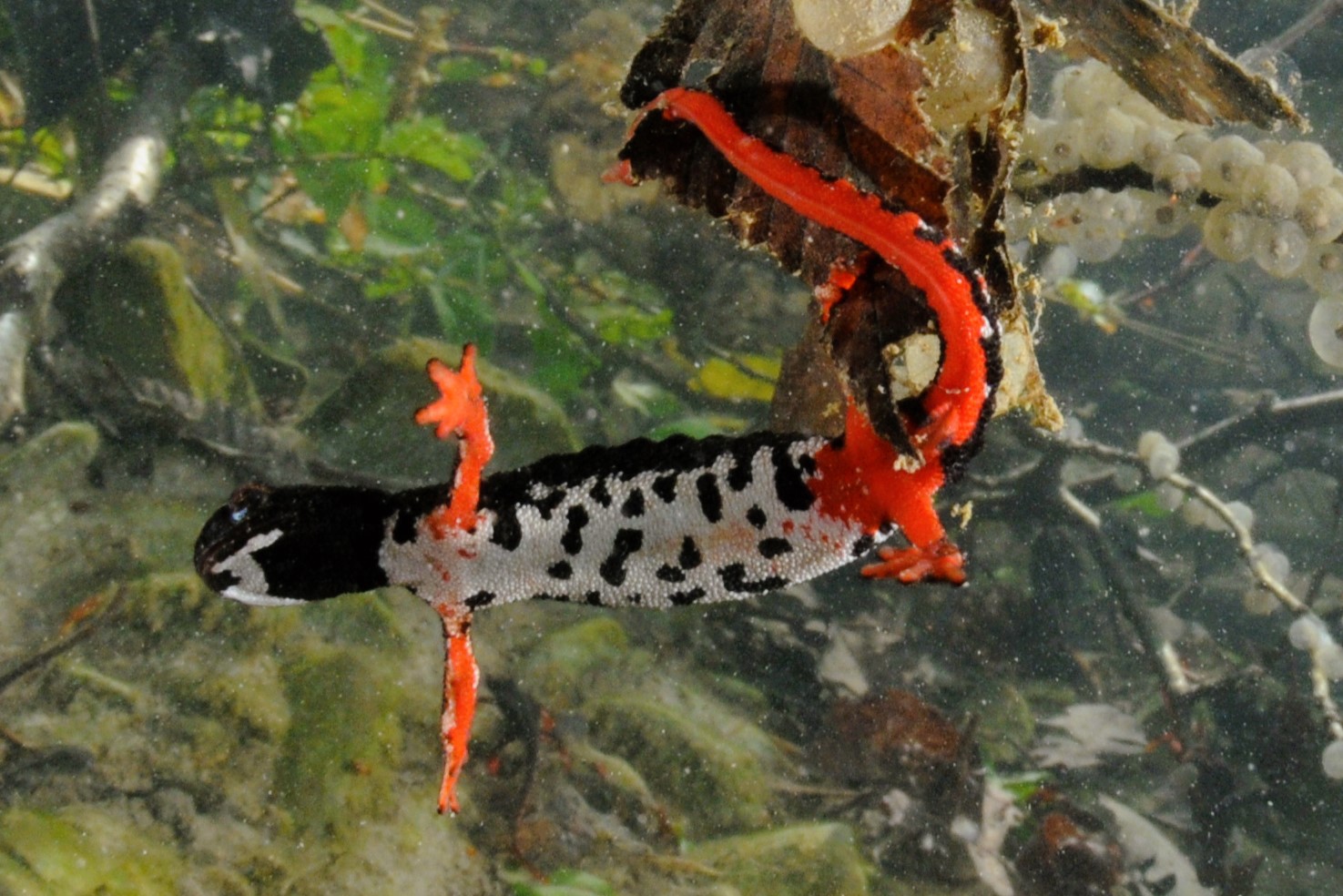
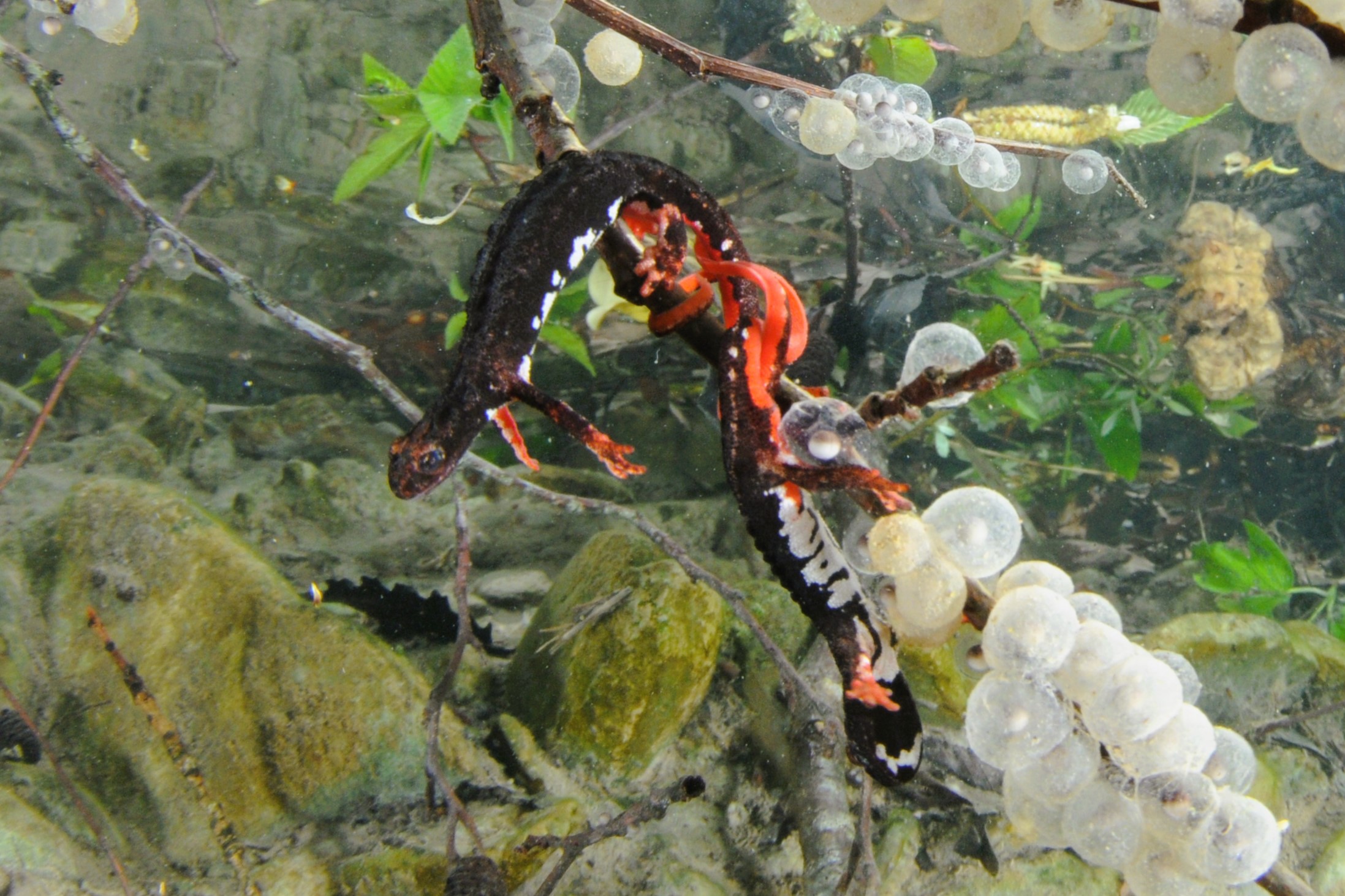

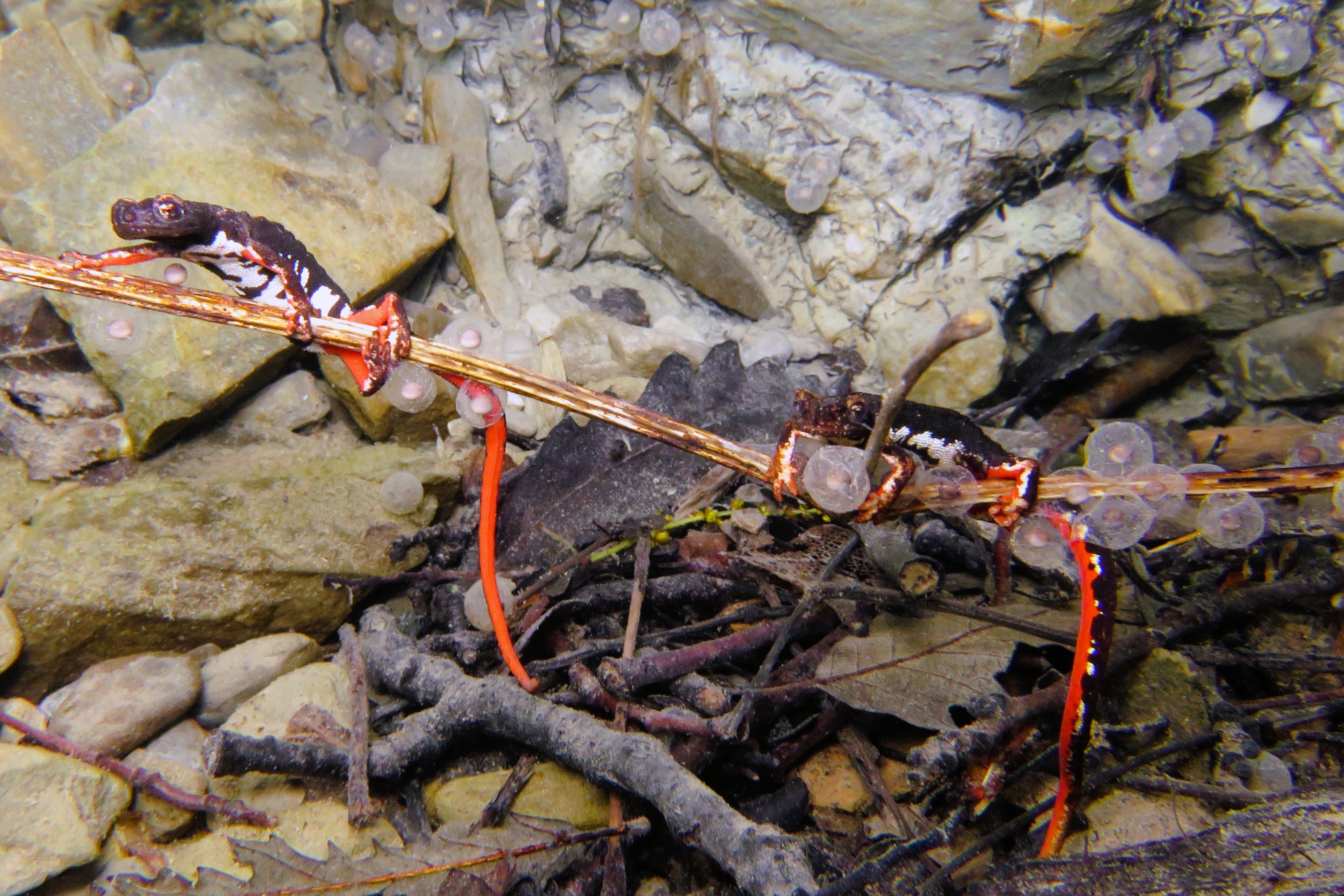
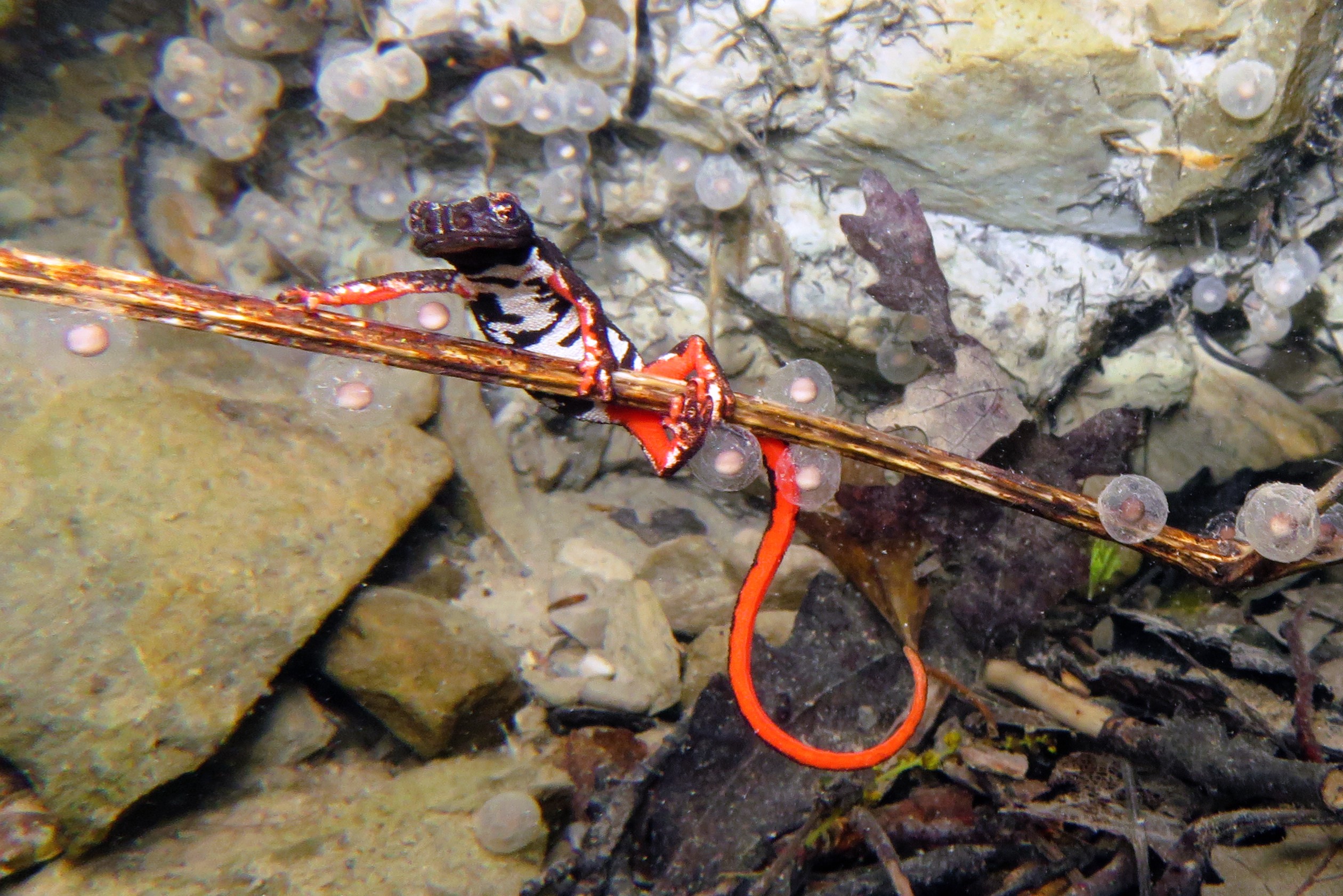

Amphibia → Urodela → Salamandridae → Salamandrina → Salamandrina perspicillata
Salamandriña, Lüxertu neigru
Savi's Salamander ( Salamandrina perspicillata ) is a small newt, unique among Italian amphibians and a symbol of the biodiversity of the Apennines and Liguria.
The body is slender and elongated, not exceeding 2.8–3.5 in (7–9 cm) in total length, including the tail.
Dorsally, the color ranges from black to very dark brown, interrupted by a characteristic light V-shaped mark on the head, known as the "mask" or "glasses," from which the international common name derives.
The belly is particularly striking: on a whitish-pink background, there are contrasting red-orange markings with black spots—a warning (aposematic) coloration used for defense.
Another peculiarity is the hind limbs, which have only four toes, a unique case among Italian newts.
The limbs are slender, with short and elongated toes, optimized for terrestrial locomotion.
Upon hatching, larvae measure about 0.3–0.4 in (8–10 mm), with light brown shades and progressive development of adult features.
In western Liguria, Savi's Salamander is found mainly in hilly and submontane areas between 660 ft and 3,300 ft (200 m and 1,000 m) in elevation, characterized by mixed woodland and good environmental humidity.
Distribution is quite fragmented and localized, with populations often limited to undisturbed areas in the inner valleys and in the remnant woods of the main valleys of the Savona area.
The species is one of the most valuable endemics in the local herpetofauna, surviving thanks to the persistence of suitable habitats and the ecological integrity of moist microenvironments.
It prefers cool, shady habitats rich in natural refuges: broadleaf woodlands (especially oak, chestnut, alder, and hornbeam), moist valleys, and stream edges with little current.
It can be found among leaf litter, under logs and stones, in rock crevices, old dry-stone walls, caves, and natural cavities.
It is especially connected to microhabitats with abundant vegetation cover and the presence of temporary water reservoirs—environments that ensure the survival of both terrestrial adults and aquatic larvae.
Mostly nocturnal and crepuscular in its habits, Savi's Salamander spends most of its life on land, sheltering during the day and emerging to feed when humidity is high or it rains.
It shows marked fidelity to breeding sites, which it returns to in spring to lay eggs.
Reproductive behavior is extremely selective: the female lays 30–60 eggs, attaching them one by one to submerged stones or roots in small watercourses or temporary pools.
Larval development usually completes within 2–4 months, depending on environmental conditions, after which the young salamanders leave the aquatic habitat for terrestrial life.
The adult diet consists mainly of small soil invertebrates such as springtails, mites, small insects, larvae, and other organisms easily found among leaf litter and mosses.
Aquatic larvae, on the other hand, feed on microinvertebrates, small crustaceans, and aquatic insect larvae, contributing to the control of these organisms' populations within forest wet habitats.
The survival of Savi's Salamander in western Liguria is threatened by the progressive alteration of breeding habitats (drying up and pollution of springs, destruction of humid microhabitats), water source diversion, fragmentation and loss of forest cover, forest fires, human pressures, and climate change, as well as the spread of emerging diseases, especially fungi and pathogens fatal to amphibians.
Deforestation, reduction of natural refuges, and changes to the water network also represent serious risks for this sensitive species.
A true jewel of Italian biodiversity, Savi's Salamander is endemic to the Peninsula and is endowed with truly unique traits: the peculiar "unken reflex," a defensive behavior in which it displays its aposematic ventral coloration, showing the belly and curling the tail to deter predators; the odd structure of the hind legs with only four toes; fidelity to traditional laying sites, making it vulnerable to even minimal changes in breeding habitats.
In western Liguria, the species is actively monitored to assess demographic status, connectivity between populations, and the effects of environmental changes.
Its continued survival depends on the full protection of breeding sites, the safeguarding of springs, and sustainable forest management: only in this way can the survival of this rare and precious species be ensured for future generations as well.